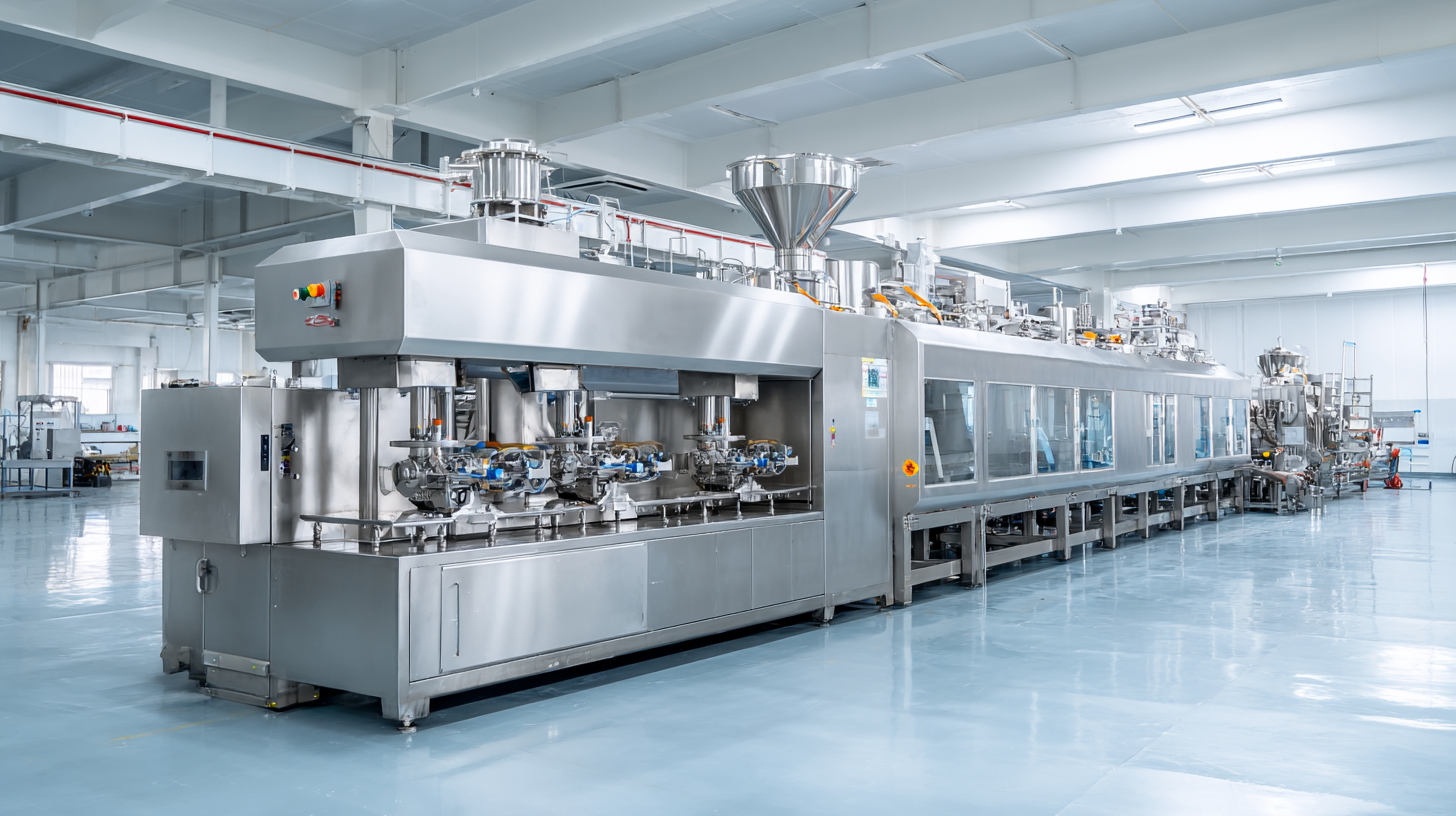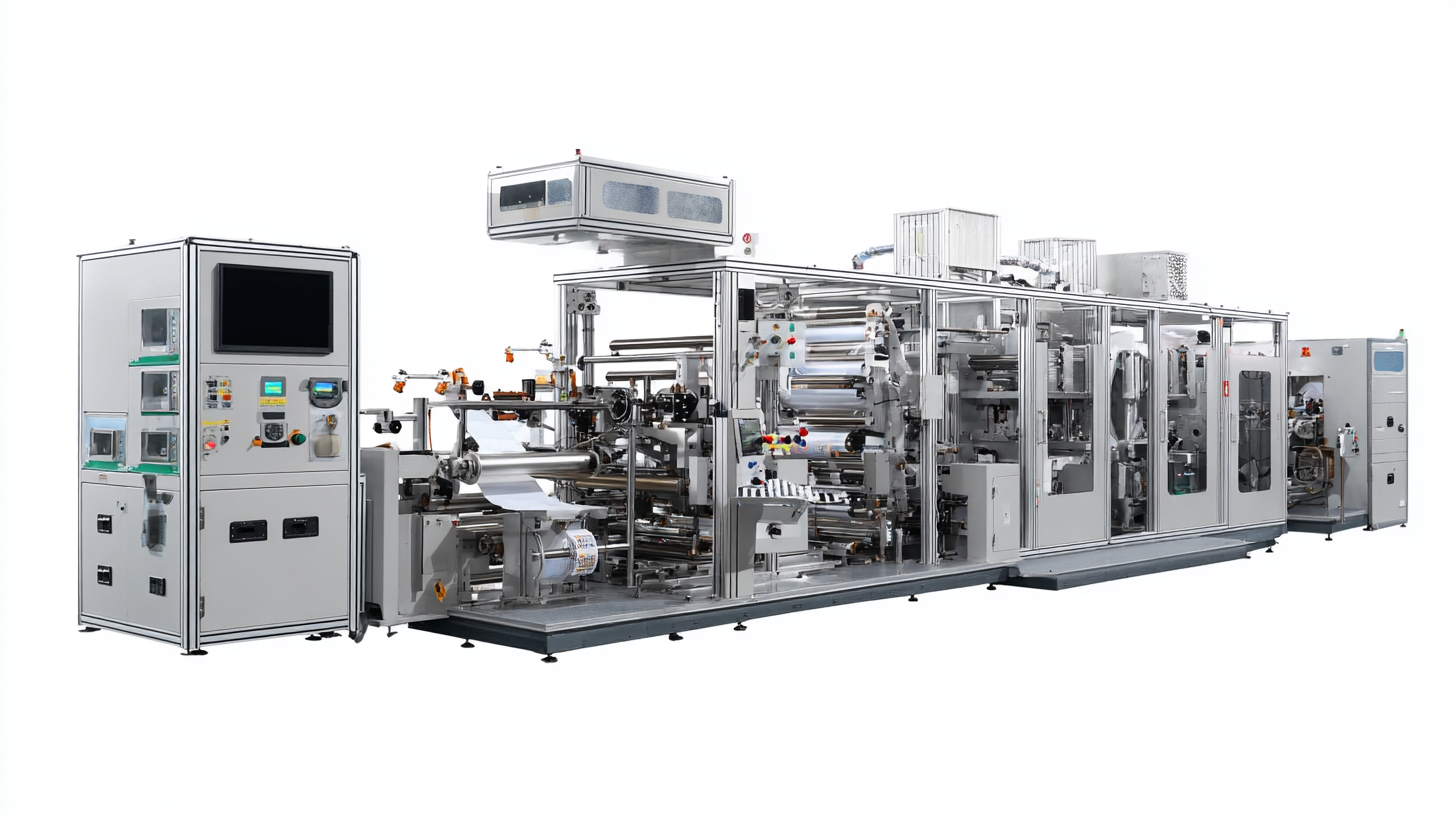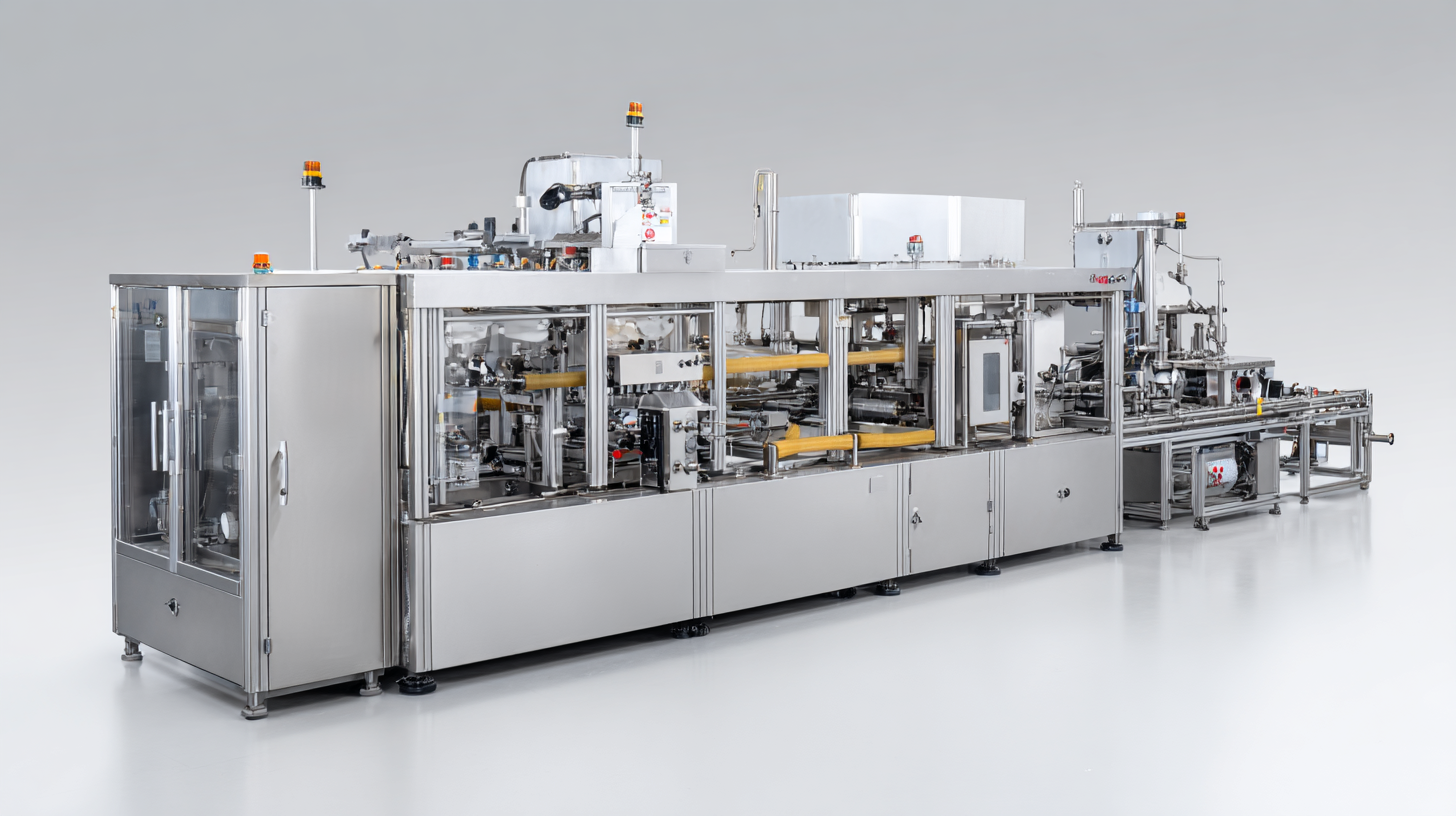The Ultimate Guide to Choosing the Right Form Fill Seal Machine for Your Business
In today's competitive packaging industry, selecting the appropriate form fill seal machine is crucial for optimizing production efficiency and maintaining product quality. According to a report by Grand View Research, the global form fill seal machine market size was valued at $4.43 billion in 2021 and is projected to expand at a CAGR of 5.5% from 2022 to 2030. This growth is driven by the increasing demand for packaged goods and the need for automation in manufacturing processes.

Businesses must navigate a variety of options, from vertical to horizontal form fill seal machines, each tailored to specific product types and packaging requirements. In this ultimate guide, we will explore essential factors to consider when choosing the right form fill seal machine for your business, helping you make an informed decision that aligns with your production goals while maximizing efficiency and profitability.
Key Factors to Consider When Selecting a Form Fill Seal Machine
When selecting a form fill seal machine for your business, several key factors must be carefully considered to ensure optimal performance and efficiency. According to a recent report by MarketsandMarkets, the global form fill seal machines market is expected to reach $7.8 billion by 2025, driven by the rising demand for flexible packaging solutions. This underscores the importance of choosing the right machine to stay competitive in a growing market.
One critical factor is the machine's compatibility with various packaging materials. Reports indicate that over 45% of packaging professionals prioritize machines capable of handling multiple types of substrates, such as plastic, paper, and foil. Additionally, businesses should assess the machine's speed and output capacity; as highlighted by a study from PMMI, the Association for Packaging and Processing Technologies, high-speed machines can significantly enhance production rates, achieving outputs of up to 300 packs per minute, which can be a game-changer in meeting market demand. Understanding these aspects will help businesses align their packaging needs with efficient operational capabilities.
Understanding Different Types of Form Fill Seal Machines
When it comes to selecting a form fill seal (FFS) machine for your business, understanding the various types available is crucial. There are primarily three types of FFS machines: horizontal, vertical, and sachet machines. According to industry reports, the global form-fill-seal packaging market was valued at approximately $29.5 billion in 2020 and is expected to grow at a CAGR of 5.6% from 2021 to 2028. This growth underscores the increasing demand for efficient, customizable packaging solutions in various sectors including food and beverage, pharmaceuticals, and personal care.
Horizontal FFS machines are often preferred for their versatility; they can handle a wide range of products, from solid items to powders and liquids. These machines are ideal for high-speed production and are commonly used for packaging snacks and frozen foods. On the other hand, vertical FFS machines are typically more compact and better suited for granulated products, powders, and liquids in pouches. A 2021 market analysis indicated that vertical FFS systems represent about 47% of the total market owing to their efficiency in space utilization and speed. Finally, sachet machines cater specifically to single-use packets, gaining popularity in industries like personal care and healthcare, where convenience is key. Understanding these distinctions can greatly enhance your decision-making process for an investment in FFS technology.
Assessing Production Volume and Speed Requirements
When choosing the right form fill seal machine for your business, assessing production volume and speed requirements is crucial. A machine's speed directly impacts your production capabilities, and understanding your operational demands will guide your selection. For instance, a high-speed machine may be necessary for businesses with large output needs, while a slower option might suffice for smaller production volumes. Understanding these parameters can help minimize bottlenecks and optimize workflow.
**Tip:** Evaluate your current and projected production volumes to determine the appropriate speed for your machinery. Incorporate data on expected growth in demand, as underestimating future requirements can lead to costly upgrades down the line.
Moreover, consider the nuances of your product types and packaging specifications. The form fill seal machine must cater to the specific attributes of your products, including shape, size, and material. An efficient machine can significantly enhance consistency and reduce material waste, thus adopting advanced technologies that allow for complex product geometries might be beneficial.
**Tip:** Test different machine configurations to find the right balance between speed and precision. Investing in a flexible machine that can adapt to various products will serve your business better in the long run.

Evaluating Material Compatibility for Packaging Needs
When selecting a form fill seal machine, one of the most critical factors to consider is material compatibility. Different packaging materials have distinct properties that can affect the sealing process, product shelf life, and overall functionality of the packaging. Ensure that the materials you plan to use are compatible with the machine's sealing technology, whether it’s heat sealing, cold sealing, or pressure sealing.

Tips: Always conduct a thorough material test before finalizing your decision. Consider factors like film thickness, barrier properties, and sealing temperatures. This initial assessment can save you from costly adjustments later on.
Additionally, don't overlook the importance of supplier support and equipment flexibility. Your business may evolve, and your packaging needs might change over time. A machine that can handle various materials, including laminates and biodegradable options, may offer better long-term value.
Tips: Research the machine's specifications and ask the manufacturer for case studies or references. Understanding how the equipment performs with different materials will guide you in making a more informed choice.
Tips for Budgeting and ROI Forecasting on Packaging Equipment
When considering budgeting and ROI forecasting for packaging equipment, businesses must understand the significant growth projected in the modular packaging equipment market, which is expected to increase from USD 15.83 billion in 2025 to around USD 25.00 billion by 2034. This expansion highlights the critical role that these machines play in enhancing operational efficiency and scaling production capabilities. Investing in high-quality form fill seal machines can yield substantial returns, particularly as companies increasingly automate their packaging processes to meet consumer demand.
In addition, the global packaging automation solution market is anticipated to grow from USD 80,341 million in 2024 to approximately USD 182,491 million by 2035. Such statistics underscore the importance of selecting the right equipment not just for immediate operational needs but also for long-term viability. The surge in demand necessitates a thorough analysis of potential ROI, guiding businesses to allocate their budgets more effectively and ensure they invest in technologies that will sustain their competitive edge in the evolving market landscape. As companies navigate this dynamic environment, understanding these market trends will be essential for making informed decisions that drive profitability.

